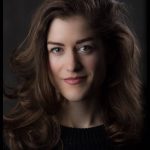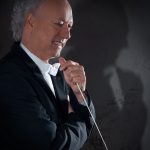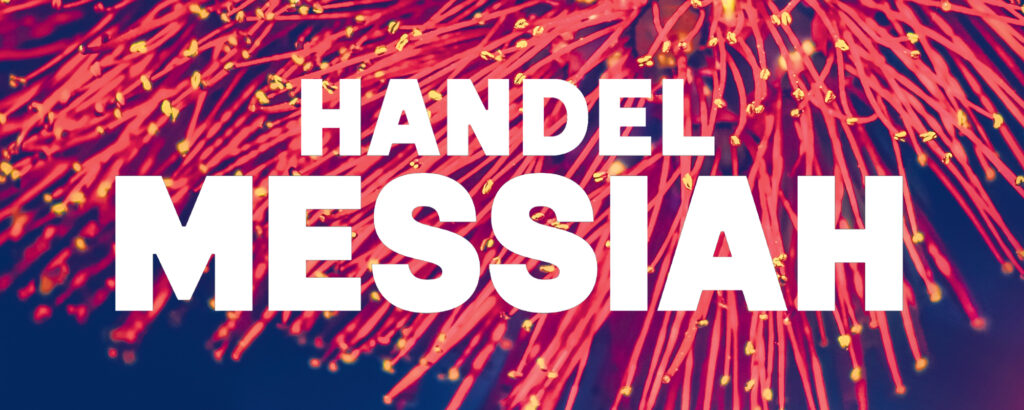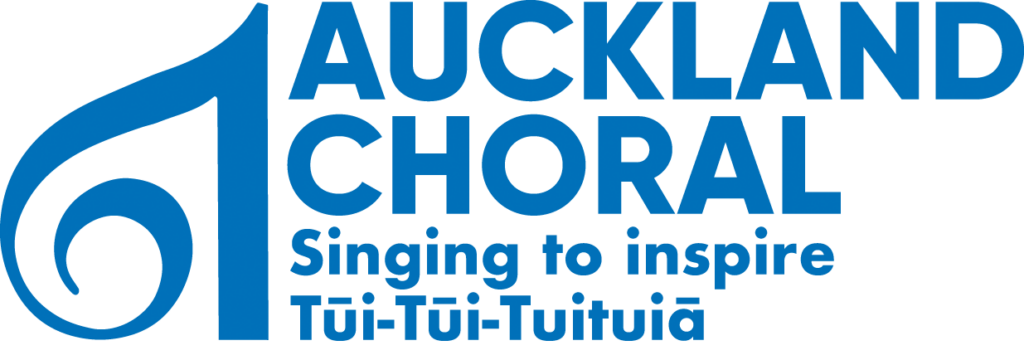Programme Notes
Leopold Hofmann (1738–1793), Mass in D
(Badley C13b)
Leopold Hofmann was one of Vienna’s most prominent composers during the middle decades of the eighteenth century. Although he was a prolific composer of instrumental works, including symphonies and concertos, Hofmann was first and foremost a church musician. His appointment first as regens chori at St Peters (1764) and in 1772, concurrently as Kapellmeister at St Stephen’s Cathedral, speaks volumes for the high regard in which he was held in the imperial capital. Although Hofmann’s instrumental works quickly fell victim to changes in fashion like those of most of his contemporaries, his sacred works – and his Masses in particular – continued to be copied and performed for many decades after his death.
Hofmann is known to have composed at least 34 Masses, the earliest of which probably date from the late 1750s. Most of these works appear to have been composed before ca 1783, either for St Peter’s or in response to external commissions. Hofmann’s Masses are, with few exceptions, compact works that are perfectly tailored for the purpose for which they were written. The choral writing is generally homophonic in texture which allows the words to be heard over the wash of instrumental sound in the resonant acoustics of the churches where they were performed. One of their most attractive features is the frequent inclusion of concertato instruments. The organ is most commonly used – sometimes in an individual movement such as the Benedictus, and on other occasions throughout the entire work – but Hofmann also writes beguiling solos for violin and flute and frequently employs pairs of violas or trombones as soloists. Many of the works are without vocal soloists, but Hofmann’s skilful instrumental writing – and in particular, his fondness for including attractive obbligato parts – lends them to ample musical variety. The present work unusually has a solo cello part throughout although it also exists in a version with organ solo. Both versions are authentic, but it is impossible to establish which came first or why, let alone when they were written.
Solo cello parts comparatively are rare in Hofmann’s Masses and there must have been a good reason why he composed the work in this manner or adapted it from an existing organ-solo Mass. One possible explanation is the presence in Vienna of the cello virtuoso Joseph Weigl, the cellist for whom Haydn composed his magnificent C major Concerto in ca 1765. Weigl was a member of Hofmann’s orchestras at St Peter’s and at Stephen’s and it is possible that his exceptional playing was not only responsible for the increased virtuosity of Cello Concertos C1 and D3, but also for the composition or arrangement of the present Mass. Unfortunately, this does not explain why this version never appears to have been part of the music collections of St Peter’s or St Stephen’s since Weigl was still playing in the orchestras there in the 1780s. While it is possible that it predates both Weigl’s arrival in Vienna in 1769 and Hofmann’s appointment as cathedral Kapellmeister in 1772, it seems unlikely – although not entirely impossible – that it predates his appointment at St Peter’s. One further tantalising piece of evidence concerning the link with Weigl can be found in a copy of the work preserved in Budapest in the Országos Széchényi Könyvtár. This particular copy formerly belonged to the Esterházy Kapelle which owned a substantial number of works by Hofmann. The acquisition of this version of the Mass, as opposed to the C major version with organ solo, may indicate local knowledge of its association with Weigl.
The solo cello part is not the only unusual feature of this Mass. In addition to the conventional Viennese scoring of 2 violins, violone and organ, Hofmann includes parts for four trumpets and timpani. Although these parts are not very elaborate, they add to the weight and brilliance of sound so characteristic of eighteenth-century Viennese church music.
(notes: Allan Badley)
Associate Professor Allan Badley from the University of Auckland, one of the world’s leading experts on Viennese music in the late 18th century, will give a pre-concert talk at 6.50pm. Please join us to learn more about this astonishing work.
Ola Gjeilo (b. 1978), Luminous Night of the Soul
Luminous Night of the Soul is the brighter, sunnier, sequel to Dark Night of the Soul, [a magical poem by St. John of the Cross (1542-1592)], published in 2011. Both works are independent pieces that can be performed separately, but they are also conceived as two movements of the same work. Part of the reason for the solo cello passage at the introduction to Luminous Night is that I wanted a quiet respite from the saturated washes of sound that are such a big part of Dark Night. The essential link between the two pieces is a theme that is featured towards the end of both works, but featured in very different ways. While the end of Dark Night is lyrical and romantic, the finale of Luminous Night is exuberant and relentless. Luminous Night incorporates words by Charles Anthony Silvestri, in addition to the two stanzas from St. John of the Cross’ poem “Dark Night of the Soul.” The two pieces are both influenced by a wish to feature the piano more heavily in choral music, not just as generic, unassuming accompaniment, but as an equal partner to the choir, aided and supported by the string quartet. Most of all, I wanted to find ways to compose lush, warm, symphonic-sounding music, while still only scoring for five instruments, in addition to the choir.
Ola Gjeilo was born in Norway in 1978 and moved to the United States in 2001 to begin his composition studies at the Juilliard School in New York City. He currently lives in Laguna Beach, California. He is an exclusive Decca Classics artist, and his Decca choral albums include Ola Gjeilo, Winter Songs & Dreamweaver, featuring Tenebrae, Voces8 and the Choir of Royal Holloway, as well as the solo piano albums Night and Dawn. His global streams have now surpassed 230 million.
(notes: Ola Gjeilo)
Eric Whitacre (b. 1970), Lux Aurumque
Lux Aurumque, which translates to “Light of Gold,” was initially composed as an a cappella choral piece in the autumn of 2000 and was later arranged for choir and symphonic winds. It is inspired by a poem by Edward Esch, which Whitacre described as striking him with its “genuine, elegant simplicity.” The poem was subsequently translated into Latin by American poet Charles Anthony Silvestri.
Grammy Award-winning composer and conductor Eric Whitacre is one of today’s most renowned musicians. A graduate of The Juilliard School in New York, his works are performed globally, and his groundbreaking “Virtual Choirs” have brought together over 100,000 singers from more than 145 countries. In recent years, Whitacre has been honoured with the Richard D. Colburn Award from the Colburn School and an Honorary Doctorate of Arts from Chapman University, California.
(notes: Sam Girling)
Johann Sebastian Bach, Magnificat in D (BWV 243)
- Magnificat anima mea Dominum (Chorus)
- Et exsultavit (Aria – Soprano II)
- Quia respexit (Aria – Soprano I)
- Onmes generationes (Chorus)
- Quia fecit mihi magna (Aria – Bass)
- Et misericordia (Duet – Alto & Tenor)
- Fecit potentiam (Chorus)
- Deposuit potentes (Aria – Tenor)
- Esurientes implevit bonis (Aria – Alto)
- Suscepit Israel (Soprano and Alto)
- Sicut locutus est (Chorus)
- Gloria Patri (Chorus)
In 1723, J.S. Bach was appointed Cantor of St. Thomas Church in Leipzig. The position was highly demanding, requiring him to teach at the church school, play the organ, rehearse the choir, and compose music for the city’s two main Lutheran churches, as well as oversee and train musicians at three additional churches. Despite this immense workload and frequent conflicts with city authorities, Bach produced some of his most celebrated and enduring works during this period. His choral compositions from this time include monumental masterpieces such as the St. John Passion, St. Matthew Passion, Magnificat, Mass in B minor, the Christmas Oratorio, and around 250 church cantatas.
Bach originally composed the Magnificat for the Christmas Day Vespers. This first version was in E-flat major and included three chorales and a duet for soprano and bass, “Virga Jesse floruit”, all of which were particularly suited to the Christmas season. About 1730, he revised the piece, changing the key to D major and omitting the Christmas-specific movements, making it suitable for performance at any festival. Though the Lutheran liturgy was typically in German, Latin was still occasionally used in special services and important churches, as is the case with the Magnificat.
Given the time constraints of the Vespers service, Bach kept the movements in the Magnificat concise, unlike some of his other choral works from the same period. The text, taken from the Gospel of St. Luke, is often treated by Bach line by line, or even word by word, as independent units. His musical interpretation does not always convey that these are the words of the Virgin Mary.
The Magnificat is a grand composition, featuring five soloists, a five-part choir, and an unusually large orchestra for its time, which includes three trumpets, two flutes, two oboes, strings, and continuo. The piece’s grandeur and joy foreshadow the large-scale choruses found in Bach’s later Mass in B minor.
It begins with an extended orchestral introduction, prominently featuring trumpets and timpani. This leads directly into a jubilant opening chorus, “Magnificat anima mea Dominum” (“My soul magnifies the Lord”). The sequence of movements that follows is less focused on spiritual meditation and more on engaging the listener. Bach employs abundant word-painting throughout, using musical elements to reflect the text. For instance, rising notes depict joy in “Et exultavit”, while descending lines illustrate the theme of “Deposuit” (“He has put down”). In the chorus “Fecit potentiam”, the choral texture breaks apart to mirror the scattering described by the word “dispersity”.
The Magnificat consists of twelve distinct movements that seamlessly flow into one another, drawing exclusively from the canticle text. Unlike an oratorio or passion, the Magnificat includes no additional texts, meaning there are no recitatives. This absence of recitative allows for a more extended exploration of the included movements. The chorus provides emphasis in sections like “Fecit potentiam in brachio suo” (“He has shown strength with His arm”), while the more introspective passages are assigned to the soloists. In the final chorus, Bach adds a clever touch: at the words “Sicut erat in principio” (“As it was in the beginning”), he reprises the music from the opening of the work, not only reinforcing the text’s meaning but also giving the piece a balanced and satisfying conclusion.
(notes: Sam Girling)
Text & Translation
Leopold Hofmann, Missa in D (Badley C13b)
Kyrie eleison, Christe eleison.
Lord have mercy, Christ have mercy.
Gloria in excelsis Deo
et in terra pax hominibus bonae voluntatis.
Laudamus te, benedicimus te,
adoramus te, glorificamus te.
Gratias agimus tibi propter magnam gloriam tuam.
Domine Deus, Rex coelestis,
Deus Pater omnipotens.
Domine Fili unigenite Jesu Christe.
Domine Deus, Agnus Dei,
Filius Patris.
Glory to God in the highest and on earth peace to people of good will.
We praise you, we bless you, we worship you, we glorify you, we give you thanks for your great glory, Lord God, heavenly King, God the almighty Father.
Lord Jesus Christ, only begotten Son, Lord God, Lamb of God, Son of the Father.
Qui tollis peccata mundi,
miserere nobis.
Qui tollis peccata mundi,
suscipe deprecationem nostram.
Qui sedes ad dexteram Patris,
miserere nobis.
Who takes away the sins of the world,
have mercy on us.
Who takes away the sins of the world,
receive our prayer.
Who is seated at the right hand of the Father
have mercy on us.
Quoniam tu solus Sanctus,
tu solus Dominus,
tu solus Altissimus,
Jesu Christe.
For you alone are the Holy One, you alone are the Lord,
you alone are the Most High,
Jesus Christ.
Cum Sancto Spiritu in gloria Dei Patris.
Amen.
With the Holy Spirit, in the glory of God the Father.
Amen.
Credo in unum Deum,
Patrem omnipotentem,
factorem caeli et terrae,
visibilium omnium et invisibilium,
et in unum Dominum Jesum Christum,
Filium Dei unigenitum,
et ex Patre natum, ante omnia saecula,
Deum de Deo, lumen de lumine,
Deum verum de Deo vero,
genitum, non factum, consubstantialem Patri,
per quem omnia facta sunt,
qui propter nos homines et propter nostram salutem descendit de caelis.
I believe in one God,
the Father Almighty,
maker of heaven and earth,
and of all things visible and invisible,
and in one Lord Jesus Christ,
the Only Begotten Son of God,
Begotten of his Father before all ages,
God of God, Light of Light,
very God of very God,
begotten, not made,
of one substance with the Father,
by whom all things were made,
who for us men and for our salvation
came down from heaven.
Et incarnatus est de Spiritu Sancto
ex Maria Virgine, et homo factus est.
Crucifixus etiam pro nobis sub Pontio Pilato,
passus et sepultus est.
And was incarnate by the Holy Spirit of the Virgin Mary,
and was made man.
And was also crucified for us under Pontius Pilate,
suffered and was buried.
Et resurrexit tertia die, secundem Scripturas,
et ascendit in caelum, sedet ad dexteram Patris
et iterum venturus est cum gloria,
judicare vivos et mortuos;
cujus regni non erit finis.
Et in Spiritum Sanctum, Dominum et vivificantem:
qui ex Patre Filioque procedit.
Qui cum Patre et Filio simul adoratur et conglorificatur,
qui locutus est per Prophetas.
Et unam sanctam catholicam et apostolicam Ecclesiam.
Confiteor unum baptisma in remissionem peccatorum.
Et exspecto resurrectionem mortuorum,
et vitam venturi saeculi.
Amen.
And the third day he rose again according to the Scriptures,
and ascended into heaven,
sitting on the right hand of the Father,
and he shall come again with glory
to judge both the living and the dead;
whose kingdom shall have no end.
And I believe in the Holy Ghost the Lord, the Giver of Life,
who proceeded from the Father and the Son.
Who with the Father and the Son together is worshipped
and glorified;
who spoke through the Prophets.
And I believe in one holy Catholic and Apostolic Church;
I acknowledge one Baptism for the remission of sins;
and I look forward to the resurrection of the dead,
and the life of the world to come.
Amen.
Sanctus, Sanctus, Sanctus, Dominus Deus Sabaoth.
Pleni sunt caeli et terrae,
gloria tua.
Osanna in excelsis.
Holy, Holy, Holy,
Lord God of Hosts.
Heaven and earth are full of your glory.
Hosanna in the highest.
Benedictus qui venit in nomine Domini.
Osanna in excelsis.
Blessed is he who comes in the name of the Lord.
Hosanna in the highest.
Agnus Dei, qui tollis peccata mundi, miserere nobis.
Lamb of God, who takes away the sins of the world,
have mercy on us.
Dona nobis pacem.
Grant us peace.
Ola Gjeilo, Luminous Night of the Soul
Long before music was sung by a choir
Long before silver was shaped in the fire
Long before poets inspired the heart
You were the spirit of all that is art
You give the potter the feel of the clay
You give the actor the right part to play
You give the author a story to tell
You are the prayer in the sound of a bell
Praise to all lovers who feel your desire!
Praise to all music which soars to inspire!
Praise to the wonders of thy artistry
Our divine spirit, all glory to Thee.
—Charles Anthony Sylvestri
O guiding night
O night more lovely than the dawn
O night that has united
The lover with his beloved
Transforming the beloved in her lover.
— St John of the Cross
Eric Whitacre, Lux Aurumque
Lux,
calida gravisque pura velut aurum et canunt angeli molliter modo natum.
Light, warm and heavy as pure gold and the angels sing softly to the new-born baby.
—Edward Esch, translated into Latin by Charles Anthony Sylvestri
J. S. Bach, Magnificat in D (BWV 243)
Magnificat anima mea Dominum.
My soul proclaims the greatness of the Lord.
Et exsultavit spiritus meus in Deo salutari meo.
And my spirit has exulted in God my saviour.
Quia respexit humilitatem ancillae suae;
ecce enim ex hoc beatam me dicent.
Because he has regarded the lowliness of his handmaid;
for look! from now on they will say that I am blessed.
Omnes generationes.
Every generation.
Quia fecit mihi magna qui potens est, et sanctum nomen eius.
Because he who is mighty has done great things for me, and holy is his name.
Et misericordia a progenie in progenies timentibus eum.
And his mercy continues from generation to generation for those who fear him.
Fecit potentiam in brachio suo, dispersit superbos mente cordis sui.
He has shown might with his arm, scattered those who are arrogant in mind and heart.
Deposuit potentes de sede et exaltavit humiles.
He has put down the mighty from their thrones and raised up those who are lowly.
Esurientes implevit bonis et divites dimisit inanes.
The hungry he has filled with good things, and the rich he has sent away empty.
Suscepit Israel puerum suum recordatus misericordiae suae.
He has taken under his protection his servant Israel, and remembered his mercy.
Sicut locutus est ad Patres nostros,
Abraham et semini eius in saecula.
In accordance with what he said to our fathers,
to Abraham and to his descendants for ever.
Gloria Patri, gloria Filio, gloria et Spiritui Sancto!
Sicut erat in principio et nunc et semper et in saecula saeculorum.
Amen.
Glory to the Father, glory to the Son, glory also to the Holy Spirit!
As it was in the beginning and is now and always and throughout all ages.
Amen.
Soloists

Sarah Mileham (Soprano)
Sarah Mileham is a 21-year-old Soprano of Korean, British and New Zealand heritage. After growing up in Tairua and Cambridge, Sarah has completed her Bachelor of Music at Victoria University of Wellington under the tutelage of soprano Jenny Wollerman and bass Wade Kernot. This year, she has moved to Hamilton for her Honours studies with soprano Anna Leese.
After beginning this year at NZ Opera School, Sarah has sung the role of Adina in Donizetti’s Elixir of Love, in the chorus for NZ Opera’s Le comte ory by Rossini, and made her debut role as Countess Ceprano in NZ Opera’s production of Rigoletto by Verdi.
Sarah also frequently sings across the country in concerts and competitions. Some recent highlights include Mozart’s Requiem with Cantoris and the Wairarapa Singers, singing alongside Teddy Tahu Rhodes at Canterbury Opera’s sponsors concert, singing with Bianca Andrews at the DMMF Wellington fundraiser concert, and premiering two NZ composer song cycles with Wellington City Creative NZ.
Her first aria competition was last year in Christchurch, and she was ecstatic to have been awarded runner up. She continued to the Wellington Aria competition where she received runner up, and then made it to the finals of Lockwood NZ Aria. She started 2024 by placing first in the Nicholas Tarling Aria Competition and performed with the Manakau Symphony Orchestra in the Winners Concert in June.
Sarah has been the proud recipient of the Jann Medlicott Creative Arts Scholarship funded by the Acorn Foundation, the Moyra Todd Scholarship funded by the Todd Foundation, Kāpiti Chorale Award in Vocal Performance, and the Merle Higgie Opera Prize for Potential at the NZ Opera School 2024.

Allison Harker (Mezzo-Soprano)
Allison Harker, a mezzo-soprano originally from Vancouver, Canada, now happily calls Tāmaki Makaurau home. Allison earned a Bachelor’s degree in Opera Performance and a Diploma in Vocal Performance from the University of British Columbia. Over this time, she studied with many coloratura sopranos, Nancy Hermiston, Marisa Gaetanne and Tracy Dahl. It was to her great disappointment that despite learning from some of the most stratospheric singers in Canada, she was not to be a soprano. Luckily all was well when she discovered she could sing unusually low!
Her versatile voice has carried her through a wide variety of roles, from leading ladies to ensemble parts. Some of her favourites include Susanna and Cherubino in Le Nozze di Figaro (different productions), Papagena in Die Zauberflöte, and Esmeralda in The Bartered Bride. She’s studied at the Centre for Opera Studies in Italy and performed with the Northern Czech Orchestra in Mozart’s historic Estates Theatre in Praha, Czech Republic.
Back in Canada, Allison has performed at The Banff Centre, Bard on the Beach Shakespeare Festival, Vancouver Symphony Orchestra, Okanagan Symphony Orchestra, Opera NUOVA and Westben Summer Festival. Since coming to Aotearoa, she’s joined forces with Opus Orchestra and NZ Opera for “Figaro! Figaro! Figaro!” at the 2024 Hamilton Arts Festival.
When she’s not on stage, you’ll find Allison hiking, practicing yoga, or playing with every dog and cat in sight. Fun fact: she loves dogs and cats equally (don’t make her choose!). Thank you to the team at Auckland Choral for giving her the opportunity to sing some beautiful Bach!

Hamish Regan (Tenor)
Hamish Regan, Tenor is a graduate of the University of Auckland where he studied a Bachelor of Music and Bachelor of Commerce. He is a current member of the New Zealand Opera Chorus and St Patrick’s Cathedral Choir and is a former member of the New Zealand Youth Choir.
Hamish is in demand as both a soloist and ensemble singer and he performs regularly around Auckland. He has enjoyed performing in New Zealand Opera’s recent seasons of Le Comte Ory and Rigoletto, the Auckland Philharmonia Tristan und Isolde Opera in Concert, as well as a regular performer in the Opera Factory Dinner and Opera evenings. Alongside opera, Hamish enjoys singing a broader range of music, with a particular interest in Baroque vocal music. He enjoyed singing the tenor in the Pakuranga Choral performance of Handel’s Messiah last year and he is looking forward to performing in Bach’s Magnificat with Auckland Choral.
Hamish has a passion for bringing music into the community. He was involved in the Auckland Philharmonia “Sunday Sing Along with Wagner” community outreach event earlier in the year, and since 2019, has organised a Christmas Carolling quartet that has travelled around Auckland bringing Christmas carols to over 30 rest homes and retirement villages each year.
When he isn’t singing, Hamish works as a tax consultant and enjoys balancing his time between this and music.

Nan Zhou (Bass)
Nan Zhou, a European-based baritone, is a guest professor at the Toronto Conservatory of Music in Canada and an art committee member of China’s “International Folk Song Choral Festival”. He is a signed artist with the Zheng Xiaoying Opera Center in Hunan and the Tianjin Opera and Dance Theater. In 2005, he entered the Central Conservatory of Music as the top entrant and received a DAAD full scholarship in 2011 for studies at the Robert Schumann Hochschule in Düsseldorf, Germany. In 2017, he topped the entrance exam to the Verona Conservatory in Italy, studying under Paola Fornasari. He taught at Bath Spa University in the UK. Zhou has won the “Youngest Singer Award” at the Renata Tebaldi International Voice Competition and second prize at the Maria Callas International Voice Competition. His major opera roles include Rigoletto, La Traviata, Carmen, and The Wilderness. He has given solo concerts in Paris, Mantua, Edinburgh, and Belfast.

Uwe Grodd (Conductor)
Uwe Grodd’s contributions to classical music have brought him considerable international acclaim. In 1997 he joined Naxos Records as an Exclusive Artist and to date, he has made world premiere recordings of more than 100 works. Grodd initially gained worldwide attention when awarded First Prize at the Cannes Classical Awards 2000 for Best 18th Century Orchestral Recording conducting Hungary’s Nicolaus Esterházy Sinfonia. Two Editor’s Choice awards from Gramophone UK followed as well as the coveted International Record Review Outstanding award following his recording of Ferdinand Ries’ Complete Works for Piano and Orchestra, featuring the Royal Liverpool Philharmonic, Bournemouth Symphony, the Gaevle Symphony, and the New Zealand Symphony Orchestra.
Performance highlights include eight concerts with the Mexico City Philharmonic and the Final Concerts of the 53rd and the 54th Handel Festival in Halle, Germany. This involved a combined choir of 300 and the Philharmonisches Staatsorchester Halle. He conducted sell-out seasons of Handel’s rediscovered opera Imeneo in the Halle Opera House and was awarded the Badge of Honour for his services to the Handel Festival and the City of Halle.
Uwe Grodd is equally committed to the music of his own time, playing a pivotal role in commissioning more than 50 works from New Zealand composers. In 2021 he conducted the premiere season of the opera Ihitai ‘Avei‘a Star Navigator by Tim Finn with the Manukau Symphony Orchestra, Auckland Choral and the Graduate Choir in a sell-out season of a New Zealand Opera production. The production was staged again at the end of last year with Grodd conducting Orchestra Wellington, Orpheus and Signature choirs and members of the NZ Opera chorus.
Uwe Grodd is Professor Emeritus of the University of Auckland and has been the inaugural Music Director of the Manukau Symphony Orchestra since 1993. He was invited to become Music Director of the Auckland Choral Society, New Zealand’s longest-established symphonic choir, in 2008.

For over 150 years, Auckland Choral has continued the cherished tradition of performing Handel’s Messiah, making it a cornerstone of the city’s festive celebrations.
Felicity Tomkins Soprano
Allison Harker Mezzo-Soprano
Jordan Fonoti-Fuimaono Tenor
Alfred Fonoti-Fuimaono Bass
Auckland Choral
Pipers Sinfonia
Uwe Grodd conductor
Sunday 15 December 5.00pm
Monday 16 December 7.30pm
Auckland Town Hall


